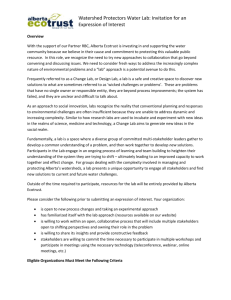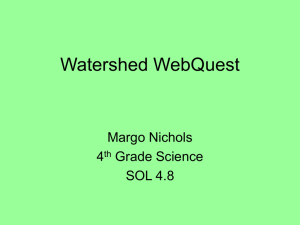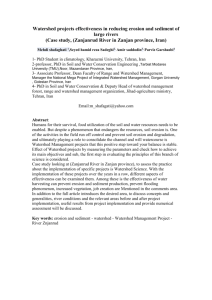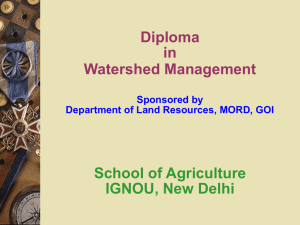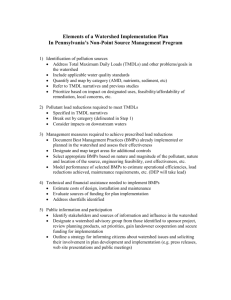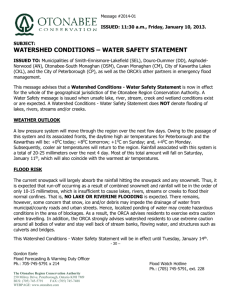FAQ_general_10.24 - South Llano Watershed Alliance
advertisement
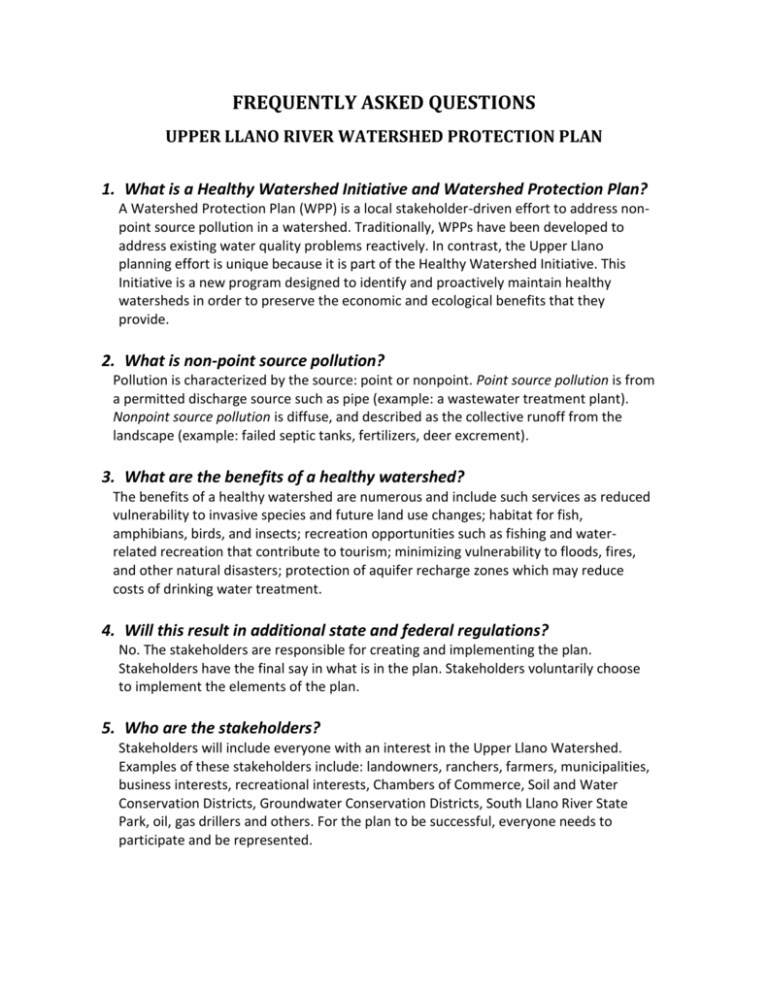
FREQUENTLY ASKED QUESTIONS UPPER LLANO RIVER WATERSHED PROTECTION PLAN 1. What is a Healthy Watershed Initiative and Watershed Protection Plan? A Watershed Protection Plan (WPP) is a local stakeholder-driven effort to address nonpoint source pollution in a watershed. Traditionally, WPPs have been developed to address existing water quality problems reactively. In contrast, the Upper Llano planning effort is unique because it is part of the Healthy Watershed Initiative. This Initiative is a new program designed to identify and proactively maintain healthy watersheds in order to preserve the economic and ecological benefits that they provide. 2. What is non-point source pollution? Pollution is characterized by the source: point or nonpoint. Point source pollution is from a permitted discharge source such as pipe (example: a wastewater treatment plant). Nonpoint source pollution is diffuse, and described as the collective runoff from the landscape (example: failed septic tanks, fertilizers, deer excrement). 3. What are the benefits of a healthy watershed? The benefits of a healthy watershed are numerous and include such services as reduced vulnerability to invasive species and future land use changes; habitat for fish, amphibians, birds, and insects; recreation opportunities such as fishing and waterrelated recreation that contribute to tourism; minimizing vulnerability to floods, fires, and other natural disasters; protection of aquifer recharge zones which may reduce costs of drinking water treatment. 4. Will this result in additional state and federal regulations? No. The stakeholders are responsible for creating and implementing the plan. Stakeholders have the final say in what is in the plan. Stakeholders voluntarily choose to implement the elements of the plan. 5. Who are the stakeholders? Stakeholders will include everyone with an interest in the Upper Llano Watershed. Examples of these stakeholders include: landowners, ranchers, farmers, municipalities, business interests, recreational interests, Chambers of Commerce, Soil and Water Conservation Districts, Groundwater Conservation Districts, South Llano River State Park, oil, gas drillers and others. For the plan to be successful, everyone needs to participate and be represented. 6. What is South Llano Watershed Alliance’s role in the WPP? The South Llano Watershed Alliance (SLWA) is another stakeholder in the process. The SLWA will help disseminate information about the WPP process through its website and e-mail list. 7. Doesn’t SLWA already have a plan? The SLWA has a Watershed Conservation Plan that addresses issues identified by the Alliance stakeholders. Such issues include increasing water conservation efforts, improving riparian habitat, wildfire restoration, and recreational trespass. Some, many, or all of the issues addressed in the Alliance’s Watershed Conservation Plan might also be included in the Watershed Protection Plan. Remember, the Alliance plan is specific to the Alliance and the Watershed Protection Plan is specific to all participating stakeholders. 8. What will be in the Watershed Protection Plan? The WPP will connect community decision-making to data collection and scientific analysis. Stakeholders will determine the contents of the WPP by identifying solutions that maintain healthy watersheds (preserve the economic and ecological benefits that they provide). Examples include best management practices that may be voluntarily implemented to address identified concerns related to land fragmentation, noxious woody vegetation, aquatic invasive species, groundwater availability, and the potential for aquifer contamination. 9. Who will have the final say in what goes in the plan? Stakeholders who participate in the Watershed Protection Planning process will have the final say.

